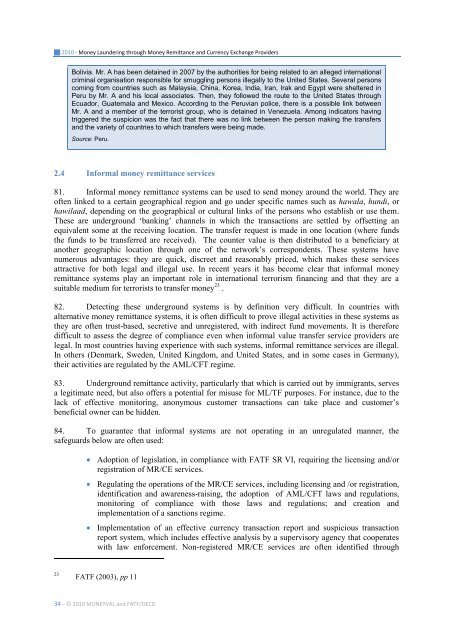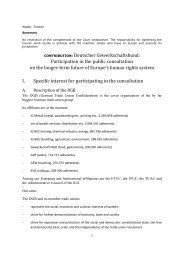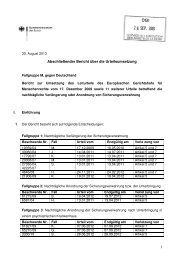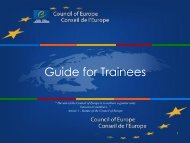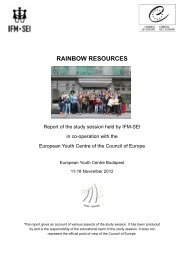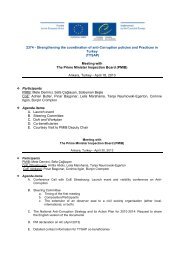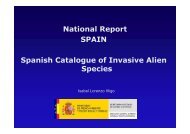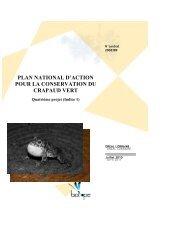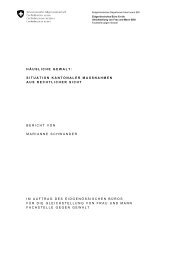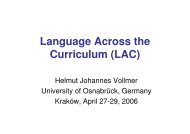Money laundering through money remittance ... - Council of Europe
Money laundering through money remittance ... - Council of Europe
Money laundering through money remittance ... - Council of Europe
Create successful ePaper yourself
Turn your PDF publications into a flip-book with our unique Google optimized e-Paper software.
2010 - <strong>Money</strong> Laundering <strong>through</strong> <strong>Money</strong> Remittance and Currency Exchange Providers<br />
Bolivia. Mr. A has been detained in 2007 by the authorities for being related to an alleged international<br />
criminal organisation responsible for smuggling persons illegally to the United States. Several persons<br />
coming from countries such as Malaysia, China, Korea, India, Iran, Irak and Egypt were sheltered in<br />
Peru by Mr. A and his local associates. Then, they followed the route to the United States <strong>through</strong><br />
Ecuador, Guatemala and Mexico. According to the Peruvian police, there is a possible link between<br />
Mr. A and a member <strong>of</strong> the terrorist group, who is detained in Venezuela. Among indicators having<br />
triggered the suspicion was the fact that there was no link between the person making the transfers<br />
and the variety <strong>of</strong> countries to which transfers were being made.<br />
Source: Peru.<br />
2.4 Informal <strong>money</strong> <strong>remittance</strong> services<br />
81. Informal <strong>money</strong> <strong>remittance</strong> systems can be used to send <strong>money</strong> around the world. They are<br />
<strong>of</strong>ten linked to a certain geographical region and go under specific names such as hawala, hundi, or<br />
hawilaad, depending on the geographical or cultural links <strong>of</strong> the persons who establish or use them.<br />
These are underground „banking‟ channels in which the transactions are settled by <strong>of</strong>fsetting an<br />
equivalent some at the receiving location. The transfer request is made in one location (where funds<br />
the funds to be transferred are received). The counter value is then distributed to a beneficiary at<br />
another geographic location <strong>through</strong> one <strong>of</strong> the network‟s correspondents. These systems have<br />
numerous advantages: they are quick, discreet and reasonably priced, which makes these services<br />
attractive for both legal and illegal use. In recent years it has become clear that informal <strong>money</strong><br />
<strong>remittance</strong> systems play an important role in international terrorism financing and that they are a<br />
suitable medium for terrorists to transfer <strong>money</strong> 23 .<br />
82. Detecting these underground systems is by definition very difficult. In countries with<br />
alternative <strong>money</strong> <strong>remittance</strong> systems, it is <strong>of</strong>ten difficult to prove illegal activities in these systems as<br />
they are <strong>of</strong>ten trust-based, secretive and unregistered, with indirect fund movements. It is therefore<br />
difficult to assess the degree <strong>of</strong> compliance even when informal value transfer service providers are<br />
legal. In most countries having experience with such systems, informal <strong>remittance</strong> services are illegal.<br />
In others (Denmark, Sweden, United Kingdom, and United States, and in some cases in Germany),<br />
their activities are regulated by the AML/CFT regime.<br />
83. Underground <strong>remittance</strong> activity, particularly that which is carried out by immigrants, serves<br />
a legitimate need, but also <strong>of</strong>fers a potential for misuse for ML/TF purposes. For instance, due to the<br />
lack <strong>of</strong> effective monitoring, anonymous customer transactions can take place and customer‟s<br />
beneficial owner can be hidden.<br />
84. To guarantee that informal systems are not operating in an unregulated manner, the<br />
safeguards below are <strong>of</strong>ten used:<br />
Adoption <strong>of</strong> legislation, in compliance with FATF SR VI, requiring the licensing and/or<br />
registration <strong>of</strong> MR/CE services.<br />
Regulating the operations <strong>of</strong> the MR/CE services, including licensing and /or registration,<br />
identification and awareness-raising, the adoption <strong>of</strong> AML/CFT laws and regulations,<br />
monitoring <strong>of</strong> compliance with those laws and regulations; and creation and<br />
implementation <strong>of</strong> a sanctions regime.<br />
Implementation <strong>of</strong> an effective currency transaction report and suspicious transaction<br />
report system, which includes effective analysis by a supervisory agency that cooperates<br />
with law enforcement. Non-registered MR/CE services are <strong>of</strong>ten identified <strong>through</strong><br />
23 FATF (2003), pp 11<br />
34 - © 2010 MONEYVAL and FATF/OECD


